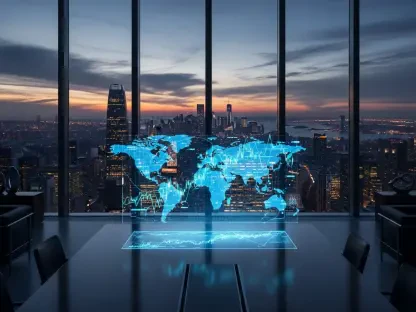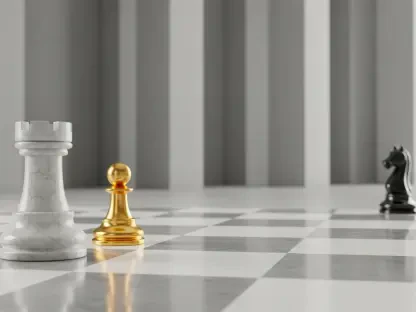In a world grappling with resource scarcity and environmental challenges, businesses face an urgent need to rethink traditional models of production and consumption, turning to innovative solutions like circular design. This transformative approach offers a pathway to sustainability by prioritizing the reuse, recycling, and repurposing of materials over the conventional linear “take-make-dispose” system, addressing ecological concerns while unlocking economic advantages. This strategy not only tackles pressing environmental issues but also provides significant benefits for companies willing to adapt. As urban populations grow and waste generation accelerates, adopting circular principles becomes a critical step for organizations aiming to build resilience and maintain competitiveness in a rapidly evolving global market. This shift is not just about reducing environmental impact; it represents a fundamental reimagining of how products are designed, manufactured, and managed throughout their lifecycle. Exploring the potential of circular design reveals its capacity to redefine business sustainability for the long term.
1. Understanding the Rise of Circular Design
Circular design has gained traction as a cornerstone of sustainable business practices, driven by the need to minimize waste and optimize resource use. Unlike the traditional linear economy, which relies on a one-way flow of materials from extraction to disposal, circular design focuses on creating closed-loop systems where products and materials are continuously reused or recycled. This approach is particularly vital as urban areas face increasing strain on resources due to population growth and heightened consumption. Companies adopting these principles are not only responding to environmental imperatives but also positioning themselves as forward-thinking leaders in their industries. The shift represents a broader recognition that sustainability is no longer optional but a necessary component of long-term business strategy, ensuring both ecological balance and operational efficiency in a world of finite resources.
The momentum behind circular design is also fueled by growing consumer demand for environmentally responsible practices. Shoppers are increasingly prioritizing brands that demonstrate a commitment to reducing waste and promoting sustainability. This trend pushes businesses to integrate circular principles into their core operations, from product design to end-of-life management. Moreover, regulatory pressures and global agreements on climate goals are compelling organizations to rethink their approaches to material use and waste. By embracing circular design, companies can align with these expectations, enhancing their reputation while mitigating risks associated with resource scarcity. This emerging paradigm offers a framework for innovation, encouraging businesses to explore new ways of delivering value without depleting the planet’s limited reserves, thereby securing a more sustainable future.
2. Economic Benefits and Business Opportunities
Adopting circular design principles presents a compelling business case, with the potential to significantly lower operational costs and boost profitability. By focusing on reusing materials and minimizing waste, companies can reduce expenses related to raw material procurement and disposal processes. Studies indicate that businesses implementing effective circular strategies may see profit margins increase by up to 20%, as they capitalize on efficiencies in resource utilization. This financial incentive is complemented by the opportunity to tap into new markets, where eco-conscious consumers seek products designed with sustainability in mind. Circular design not only cuts costs but also positions companies as innovators, capable of meeting modern demands while contributing positively to environmental goals.
Beyond cost savings, circular design enables businesses to achieve ambitious targets like carbon neutrality, a critical focus in today’s corporate landscape. By optimizing resource use and integrating sustainable materials, organizations can substantially lower emissions across their operations. This alignment with global sustainability objectives enhances brand value and builds trust with stakeholders, including investors who prioritize environmental, social, and governance (ESG) criteria. Additionally, circular practices open doors to partnerships and funding opportunities aimed at supporting green initiatives. Companies that embrace this model often find themselves ahead of competitors, as they adapt to evolving regulations and consumer expectations. The economic advantages of circular design extend far beyond immediate gains, offering a strategic edge in a marketplace increasingly defined by sustainability.
3. Practical Steps for Implementation
Integrating circular design into business operations requires a structured approach, starting with a thorough Life Cycle Assessment (LCA) to pinpoint areas for waste reduction. This process involves evaluating a product’s environmental impact from creation to disposal, identifying opportunities to enhance recyclability and durability. Engaging stakeholders, including designers, suppliers, and customers, is essential to gather diverse perspectives and ensure comprehensive solutions. Companies should also prioritize investment in research and development to explore sustainable materials and innovative processes that align with circular principles. By embedding these strategies into their core operations, businesses can create products that not only last longer but also contribute to a reduced environmental footprint, setting a standard for responsible production.
Another critical step is reconfiguring supply chains to support circular objectives, focusing on minimizing emissions across scopes 1, 2, and 3. This means collaborating with suppliers to source materials sustainably and designing logistics to facilitate product returns or recycling. Training employees to understand and champion circular practices further embeds these values into the company culture. Businesses should also set clear, measurable goals for waste reduction and track progress to maintain accountability. Leveraging technology, such as digital tools for tracking material flows, can streamline these efforts and improve transparency. Implementing circular design is a multifaceted endeavor, but with deliberate planning and commitment, companies can transform their operations to prioritize sustainability while maintaining efficiency and profitability.
4. Learning from Industry Pioneers
Several leading companies have set benchmarks in applying circular design, demonstrating its viability and impact on sustainability. For instance, some outdoor apparel brands have pioneered take-back programs, allowing customers to return used items for recycling, thereby extending the lifecycle of materials. Such initiatives not only reduce waste but also foster customer loyalty by showcasing a genuine commitment to environmental stewardship. These programs serve as practical examples of how circular design can be integrated into customer-facing operations, creating a direct link between sustainability efforts and consumer engagement. The success of these efforts highlights the potential for other businesses to adopt similar models tailored to their specific industries.
Other corporations, particularly in the furniture and consumer goods sectors, have set ambitious targets to become fully circular by focusing on sustainably sourced materials and recycling initiatives. Some have committed to ensuring all packaging is recyclable, reusable, or compostable within a defined timeframe. These goals align with broader global sustainability objectives and demonstrate how circular design can scale across different product categories. By studying these pioneers, businesses can gain insights into effective strategies, from redesigning products for longevity to building systems for material recovery. These examples underscore that circular design is not a niche concept but a scalable solution with proven results, inspiring wider adoption across diverse markets.
5. Charting the Path Forward for Sustainability
Looking ahead, a clear roadmap for embedding circular design into corporate strategies involves setting measurable targets for waste reduction and resource efficiency over the coming years. Businesses must commit to timelines that drive accountability, such as achieving specific recycling rates or reducing material inputs by a defined percentage. Collaboration with industry peers and policymakers will be crucial to create systemic change, addressing challenges that individual companies cannot tackle alone. Fostering a culture of innovation that prioritizes sustainability ensures that circular principles are not just an add-on but a fundamental part of business planning. This forward-thinking approach positions companies to adapt to future demands while contributing to a more resilient economy.
Reflecting on past efforts, many organizations have already begun laying the groundwork for circular design by piloting programs and testing sustainable materials. These initial steps proved that integrating circularity into business models is both feasible and beneficial, often yielding unexpected efficiencies. The lessons learned from those early adopters showed that persistence and adaptability are key to overcoming implementation challenges. As the journey continues, the focus should shift to scaling these efforts, leveraging technology to enhance circular systems, and advocating for policies that support a circular economy. Businesses that took bold steps in the past paved the way, and now the challenge lies in building on that momentum to create lasting, impactful change for future generations.









